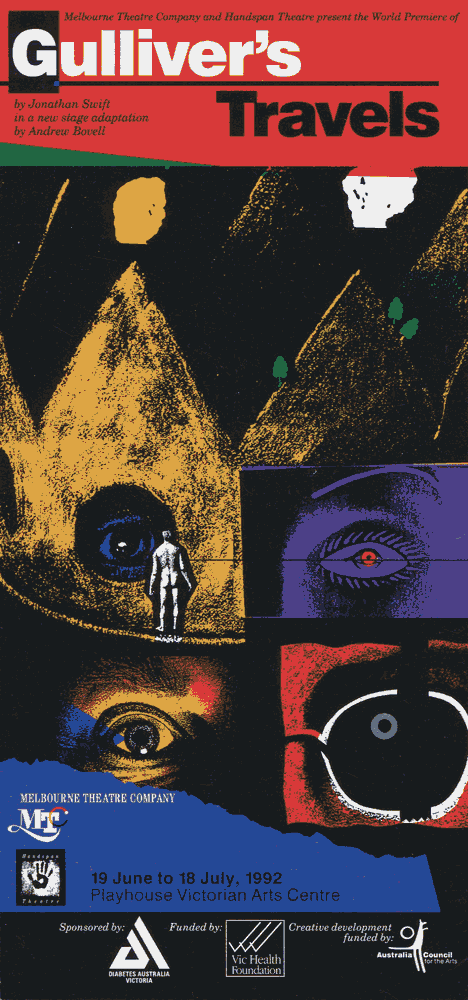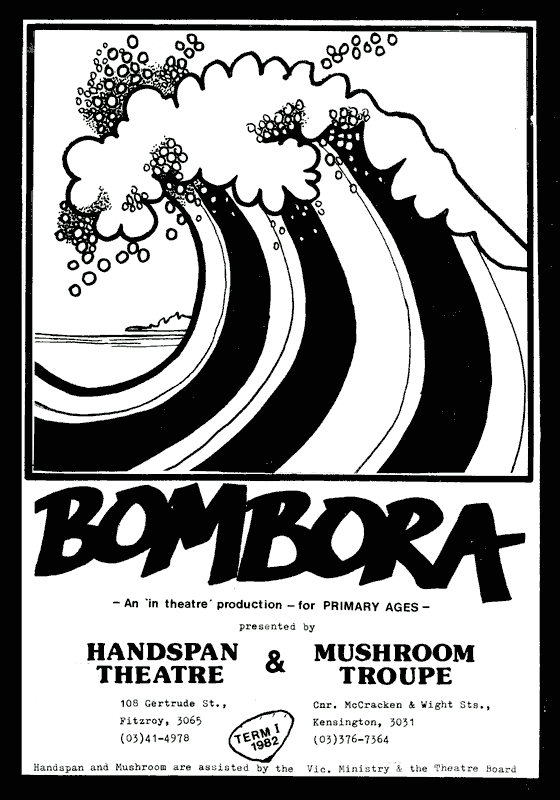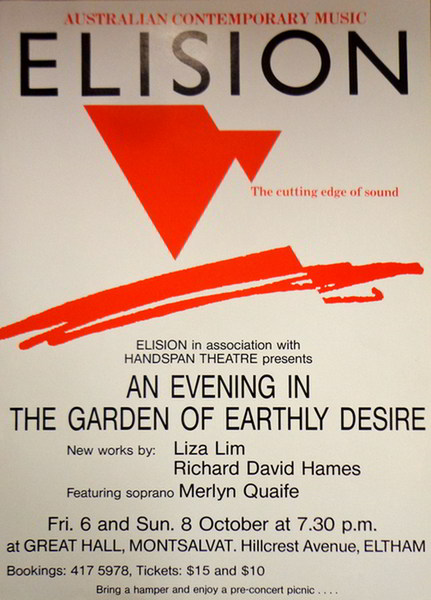
In its first years Handspan Theatre's co-productions were informal. In 1978 and 1979 Handspan members partnered with Greg Temple on the Murray River to create Rivercrafts where they acquired new skills in puppet construction and processional imagery while developing puppetry performances with project participants. In 1979 Handspan collaborated with Gaudio Visuals to produce street theatre with clown characters in fractured fairy tales twisted into topical and hilarious political commentary. In the summer of 1981/82, the company co-produced a Seaside Double Header tour with Kooka Puppet Company performing back-to-back school holiday shows in Victoria’s coastal resorts on the Mornington Peninsula.
In Melbourne’s creative melting pot of the late 1970s and early 1980s artistic experimentation and innovation flourished. Artists shared their work and their ideas with passion and enthusiasm and cross-fertilisation abounded. New performance techniques, styles and technologies were developing as traditional art form boundaries and conventions were exploded.
Alternative performing companies mushroomed as ensembles formed to make new work from new perspectives and new venues were established to present the work. Many artists were influenced by the alternative theatre movements in the UK and Europe but all sought to generate uniquely Australian work. Performers diversified their practice and skills to experiment across genres and innovative hybrid performance styles began to emerge.
Handspan was part of this world and its swirling network of artistic possibility.
- The company’s first formal co-production was with community theatre group, The Mushroom Troupe in 1982. The project involved artistic and production collaboration between both companies to create Bombora, an in-theatre play for upper primary school audiences. Both organisations pooled skills and resources to blend text, live music and actors with puppet characters in a full stage production for fully-equipped theatres.
- Co-productions for young audiences were also produced with the Education Program of the Victorian Arts Centre. Handspan created images and animated sequences for orchestral works The Carnival of the Animals (1983) and The Sorcerer’s Apprentice (1984) which were performed by the Victorian College of the Arts Orchestra and Handspan puppeteers in the newly opened Concert Hall (now Hamer Hall) for student audiences.
- Further ventures that explored the relationship between visual performance and musicians continued in later co-productions with the popular band, Mondo Rock in their film clip for The Moment, (1985) and with Elision in An Evening in the Garden of Earthly Desire (1989).
- Handspan's last works for young audiences were collaborations with indigenous artists produced with the Victorian Koori Health Unit: The Kangaroo Tale (1995) and Slow Down Cuz (1997).
- In the 1990s Handspan Theatre’s co-productions for general public theatre seasons included Gulliver's Travels (1992) with Melbourne Theatre Company; Minds Eye (1995) with Back-to-Back Theatre and Melbourne band, My Friend the Chocolate Cake and the company’s last new work, Miss Tanaka (2000), co-produced with Playbox Theatre.
- Spectacles on the street for Melbourne Moomba Festivals were co-produced with with Circus Oz I Dreamt I Could Fly (1994), and Tonight Ideas Take Flight (1995) .
Co-productions extended everybody’s artistic capacity and options in cross-genre projects. They not only produced interesting work, but through their creation, generated professional development and skills exchange. They also made projects and ambitions possible through the pooling of resources and their shared risk.
Few co-productions went on tour. The cumbersome prospect of shared remounting and tour management around individual company programming priorities was, in most cases, a stumbling block.


